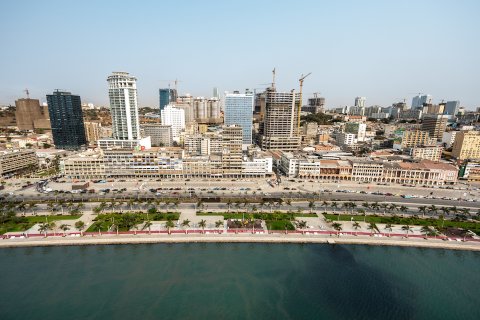According to this financial information agency, officials from the Ministry of Finance will go to Boston and New York next week to present the country's macroeconomic projections, repeating the information made available to potential investors in the Middle East.
The government plans to issue up to US$2 billion in public debt to balance the budget and try to extend the maturities of current debt, thus reducing the costs of servicing the debt.
Angola issued Eurobonds (debt in foreign currency) for the last time in 2022, trying to take advantage of low interest rates before the expected increase by the US Federal Reserve.
According to the financial rating agency Standard & Poor's, Angola will have to pay US$864 million of a debt that matures in November, while the total external debt is worth around 70 percent of GDP, Bloomberg recalls.
"This year, we are going to the markets to issue Eurobonds," José de Lima Massano told Bloomberg in Davos in late January on the sidelines of the World Economic Forum, saying it "will be no different" from what has been done before and stressing that the goal is to issue "a billion dollars, but it could go up to two billion dollars."
The pricing and maturities of the issuances are "critical, so that there is no additional pressure on public debt," Massano said, adding: "I just hope that inflation continues on a downward trajectory so that we can have more access to funds."
Angola is one of the African countries that spends more money paying interest on its debt than investing in education and health, according to the United Nations Department of Economic and Social Affairs (UNDESA).
"In several of Africa's largest and most populous economies, including Angola, Egypt, Ghana, Nigeria and Uganda, interest payments on debt have exceeded total spending on education and health in recent years, showing the difficult policy choices that governments face." governments face", reads the report on the Economic Situation and Prospects for 2025, released by the United Nations in early January.
Some of these countries, including Angola, have to spend more than 25 percent of their revenue to service debt interest, reads the report, released at the same time as an analysis by the Non-Governmental Organization Debt Justice points to Angola as the country in the world where the highest percentage of revenue (66 percent) is used to pay debt.
Angola will have to pay a total of 6.2 billion dollars in 2025, representing 5.2 percent of GDP, and 5.4 billion dollars in 2026, representing 4.2 percent of GDP, which compares with the 5.4 billion dollars paid in 2024, says Fitch Ratings in a recent analysis of the national economy, presenting these values as the total debt that will be paid in these years, which includes interest and payments at maturity of loans.
In the interview with Bloomberg, he acknowledged that the country is facing difficulties in terms of debt payments, but highlighted that the debt-to-GDP ratio has fallen to 60 to 65 percent.
"We are trying our best to extend maturities," said the minister, adding that although the country is following the International Monetary Fund (IMF) guidelines regarding resource management, it will not need another financing program.
The minister recalled that Angola's economy grew "slightly above 4 percent" last year, the same amount expected for this year, based on sectors outside of oil and the privatization program.







